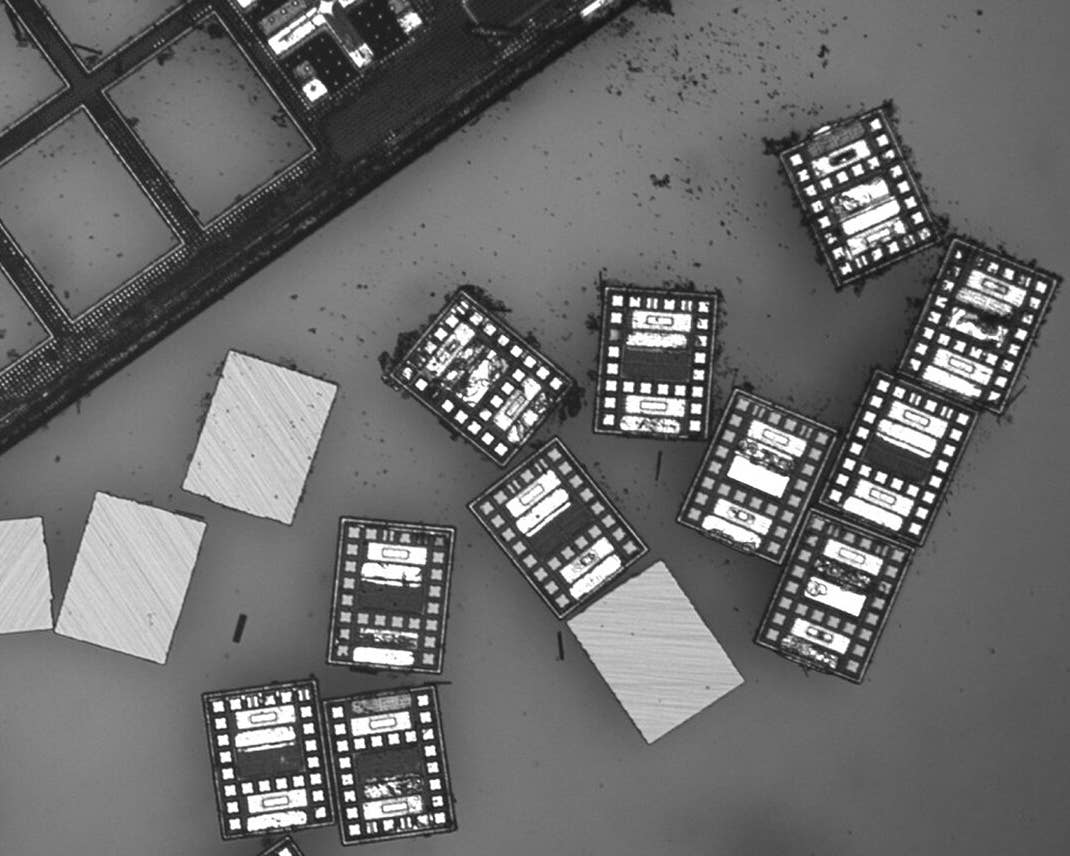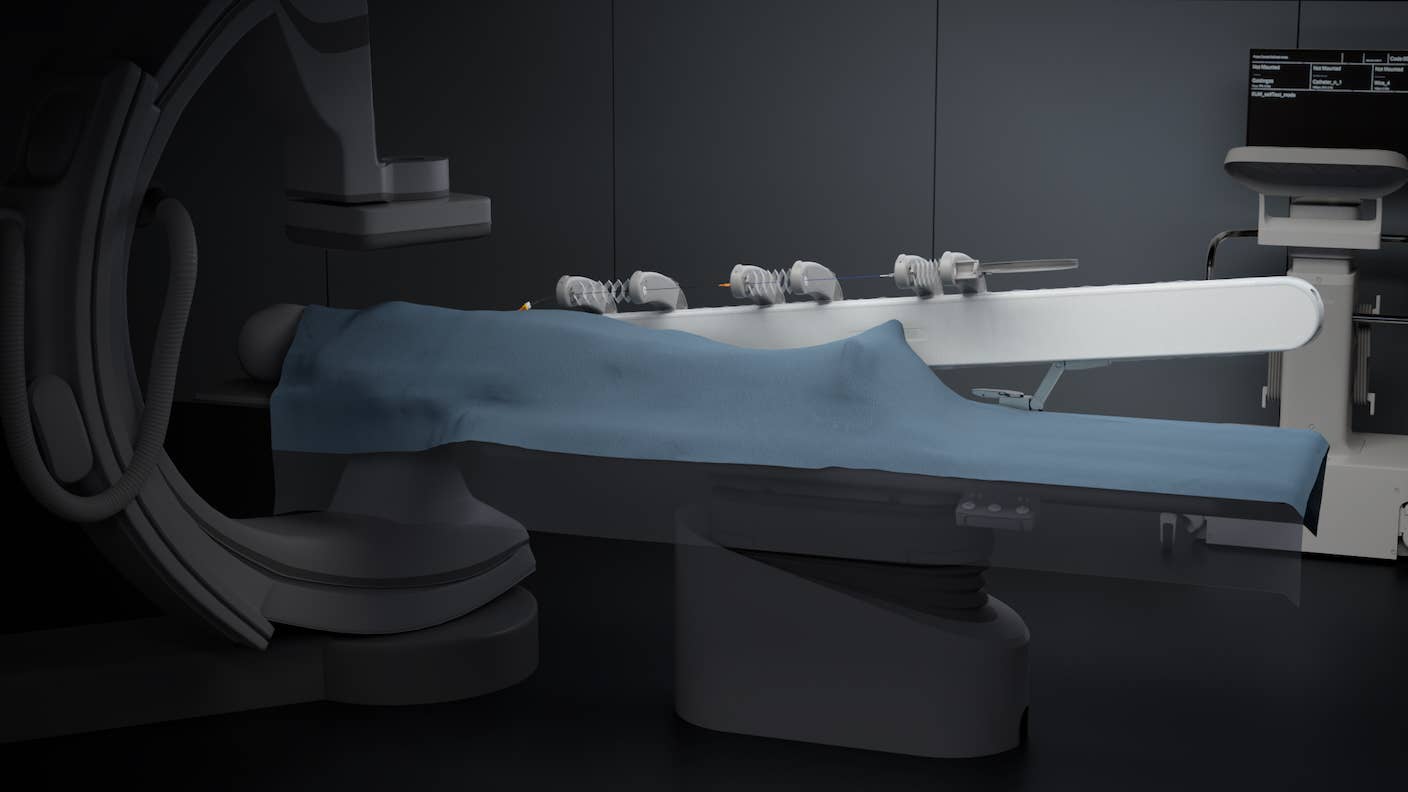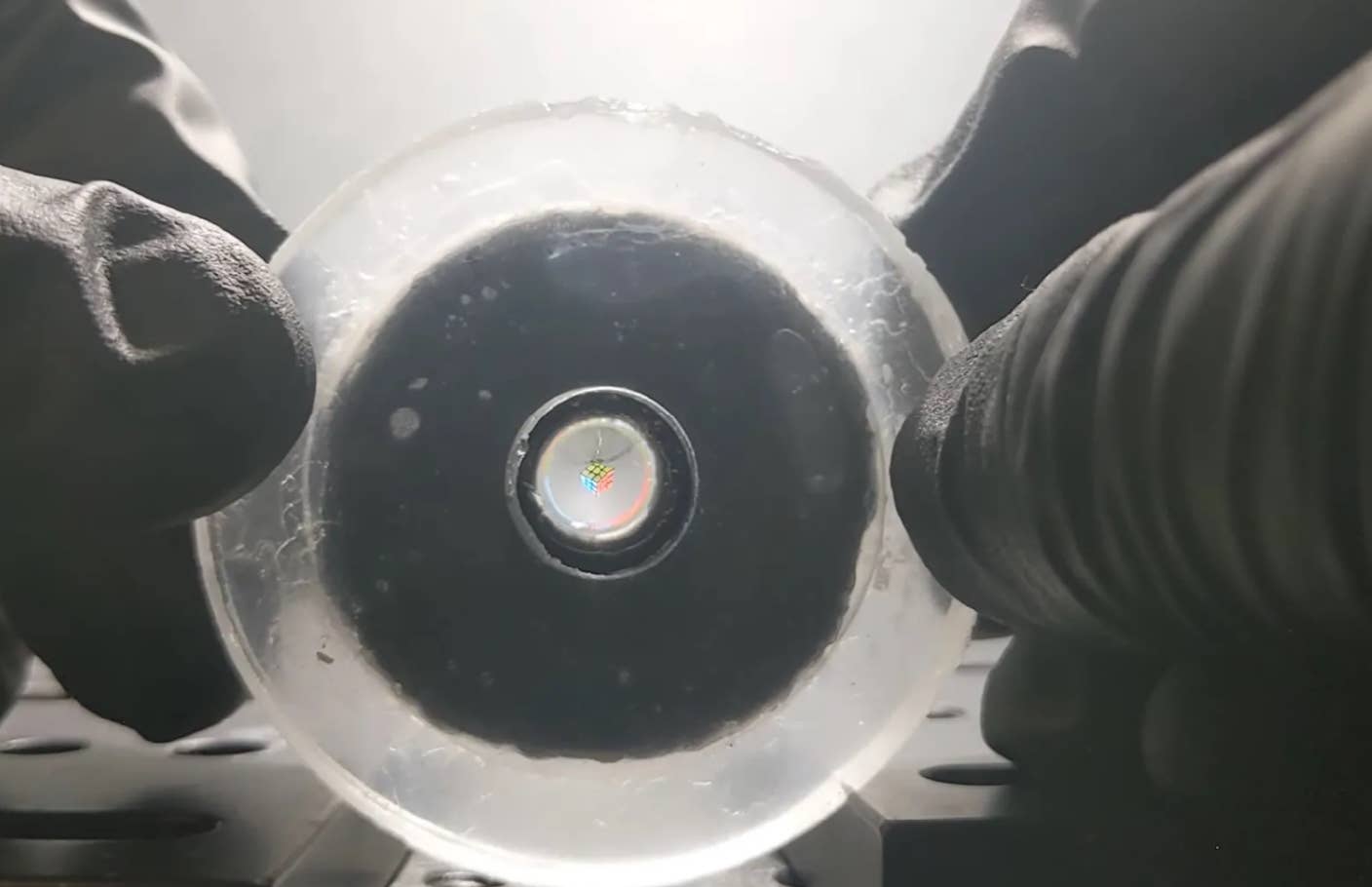Nanorobots: Where We Are Today and Why Their Future Has Amazing Potential

Share
This post is a status update on one of the most powerful tools humanity will ever create: nanotechnology (or nanotech).
My goal here is to give you a quick overview of the work going on in labs around the world, and the potential applications this nanotech work will have in health, energy, the environment, materials science, data storage and processing.
As artificial intelligence has been getting a lot of the attention lately, I believe we're going to start to see and hear about incredible breakthroughs in the nanotech world very soon.
Origins of Nanotechnology
Most historians credit the concept of nanotechnology to physicist Richard Feynman and his 1959 speech, "There's Plenty of Room at the Bottom."
In his speech, Feynman imagined a day when machines could be miniaturized and huge amounts of information could be encoded in minuscule spaces, paving the way for disruptive technological developments.
But it was K. Eric Drexler's 1986 book, Engines of Creation: The Coming Era of Nanotechnology, which really put the idea on the map.
Drexler posited the idea of self-replicating nanomachines: machines that build other machines.
Because these machines are also programmable, they can then be directed to build not only more of themselves, but also more of whatever else you'd like.
And because this building takes place on an atomic scale, these nanobots can pull apart any kind of material (soil, water, air, you name it), atom by atom, and construct, well, just about anything.
Drexler painted the picture of a world where the entire Library of Congress could fit on a chip the size of a sugar cube and where environmental scrubbers could clear pollutants from the air.
But before we explore the possibilities of nanotechnology, let's break down the basics.
What Does "Nanotechnology" Actually Mean?
Nanotechnology is the science, engineering, and technology conducted at the nanoscale, which is about 1 to 100 nanometers.
Essentially, it's manipulating and controlling materials at the atomic and molecular level.
To give you perspective, here's how to visualize a nanometer:
- The ratio of the Earth to a child’s marble is roughly the ratio of a meter to a nanometer.
- It is a million times smaller than the length of an ant.
- A sheet of paper is about 100,000 nanometers thick.
- A red blood cell is about 7,000-8,000 nanometers in diameter.
- A strand of DNA is 2.5 nanometers in diameter.
A nanorobot, then, is a machine that can build and manipulate things precisely at an atomic level. Imagine a robot that can pluck, pick and place atoms like a kid plays with LEGO bricks, able to build anything from basic atomic building blocks (C, N, H, O, P, Fe, Ni, and so on). While some people dismiss the future of nanorobots as science fiction, you should realize that each of us is alive today because of countless nanobots operating within each of our trillions of cells. We give them biological names like a "ribosome," but they are essentially machines programmed with a function like "read messenger RNA to create a specific protein."
That being said, it's important to distinguish between "wet" or "biological" nanotech, which basically uses DNA and the machinery of life to create unique structures made of proteins or DNA (as a building material) and a more Drexlerian nanotech which involves building an "assembler," or a machine that can 3D print with atoms at a nanoscale and effectively create any structure that is thermodynamically stable.
This is an area I am fascinated by and passionate about, and given how powerful it is for our future, it's something I track closely.
Let's explore a few of the different types researchers are developing.
Different Types of Nanorobots and Applications
There are many different types of nanorobots — here are just a few.
- Smallest engine ever created: “A group of physicists from the University of Mainz in Germany recently built the smallest engine ever created from just a single atom. Like any other engine, it converts heat energy into movement — but it does so on a smaller scale than ever seen before. The atom is trapped in a cone of electromagnetic energy and lasers are used to heat it up and cool it down, which causes the atom to move back and forth in the cone like an engine piston.” (Source)
- 3D-motion nanomachines from DNA: "Mechanical engineers at Ohio State University have designed and constructed complex nanoscale mechanical parts using 'DNA origami' — proving that the same basic design principles that apply to typical full-size machine parts can now also be applied to DNA — and can produce complex, controllable components for future nanorobots. (Source)
- Nanoswimmers: "ETH Zurich and Technion researchers have developed an elastic “nanoswimmer” polypyrrole (Ppy) nanowire about 15 micrometers (millionths of a meter) long and 200 nanometers thick that can move through biological fluid environments at almost 15 micrometers per second...The nanoswimmers could be functionalized to deliver drugs and magnetically controlled to swim through the bloodstream to target cancer cells, for example." (Source)
- Ant-like nanoengine with 100x force per unit weight: "University of Cambridge researchers have developed a tiny engine capable of a force per unit-weight nearly 100 times higher than any motor or muscle. The new nano-engines could lead to nanorobots small enough to enter living cells to fight disease, the researchers say. Professor Jeremy Baumberg from the Cavendish Laboratory, who led the research, has named the devices 'actuating nanotransducers' (ANTs). 'Like real ants, they produce large forces for their weight...' ” (Source)
- Sperm-inspired microrobots: "A team of researchers at the University of Twente (Netherlands) and German University in Cairo (Egypt) has developed sperm-inspired microrobots, which can be controlled by oscillating weak magnetic fields." They will be used in complex micro-manipulation and targeted therapy tasks. (Source)
- Bacteria-powered robots: "Drexel University engineers have developed a method for using electric fields to help microscopic bacteria-powered robots detect obstacles in their environment and navigate around them. Uses include delivering medication, manipulating stem cells to direct their growth, or building a microstructure, for example." (Source)
- Nanorockets: "Several groups of researchers have recently constructed a high-speed, remote-controlled nanoscale version of a rocket by combining nanoparticles with biological molecules...The researchers hope to develop the rocket so it can be used in any environment; for example, to deliver drugs to a target area of the body." (Source)
Be Part of the Future
Sign up to receive top stories about groundbreaking technologies and visionary thinkers from SingularityHub.


Key Applications of Nano and Micro-Machines
The applications of these nano and micro-machines are nearly endless.
Here are some of the most exciting ones, in my eyes:
- Cancer Treatment: Identifying and destroying cancer cells more accurately and effectively.
- Drug Delivery Mechanisms: Targeted drug delivery mechanisms for disease control and prevention.
- Medical Imaging: Creating nanoparticles that gather in certain tissues and then scanning the body with a magnetic resonance imaging (MRI) could help highlight problems such as diabetes.
- New Sensing Devices: With near limitless customizable sensing properties, nanorobotics would unlock new sensing capabilities we can integrate into our systems to monitor and measure the world around us.
- Information Storage Devices: A bioengineer and geneticist at Harvard’s Wyss Institute have successfully stored 5.5 petabits of data — around 700 terabytes — in a single gram of DNA, smashing the previous DNA data density record by a thousand times.
- New Energy Systems: Nanorobotics might play a role in developing more efficient renewable energy system. Or they could make our current machines more energy efficient such that they’d need less energy to operate at the same or high capacities.
- Super-strong Metamaterials: There is lots of research going into these metamaterials. A team out of Caltech developed a new type of material, made up of nanoscale struts crisscrossed like the struts of a tiny Eiffel Tower, that is one of the strongest and lightest substances ever made.
- Smart Windows and Walls: Electrochromic devices, which dynamically change color under applied potential, are widely studied for use in energy-efficient smart windows — these can control the internal temperature of a room, clean themselves, and more.
- Ocean-cleaning Microsponges: A carbon nanotube sponge capable of soaking up water contaminants such as fertilizers, pesticides and pharmaceuticals more than three times more efficiently than previous efforts has been presented in a study published in IOP Publishing’s journal Nanotechnology.
- Replicators: Also known as a “Molecular Assembler,” this is a proposed device able to guide chemical reactions by positioning reactive molecules with atomic precision.
- Health Sensors: These sensors could monitor our blood chemistry, notify us when something is out of whack, detect spoiled food or inflammation in the body, and more.
- Connecting Our Brains to the Internet: Ray Kurzweil believes nanorobots will allow us to connect our biological nervous system to the cloud by 2030.
As you can see, this is really just the beginning…the opportunities are near limitless.
Big Problem, Big Opportunity
Nanotechnology has the potential to solve some of the biggest problems that the world faces today.
A National Science Foundation report notes, "...Nanotechnology has the potential to enhance human performance, to bring sustainable development for materials, water, energy, and food, to protect against unknown bacteria and viruses, and even to diminish the reasons for breaking the peace."
If this wasn't exciting enough, the markets for nanotechnology are, as you might imagine, massive.
It has been forecasted that the global nanotechnology industry will grow to reach $75.8 billion (USD) by 2020.
As an entrepreneur, you need to be paying attention to these developments — there will be extraordinarily fruitful opportunities in actually building business cases around these technological developments and deploying them at scale.
Join Me
Abundance Digital Online Community: I’ve created a digital/online community of bold, abundance-minded entrepreneurs called Abundance Digital.
Abundance Digital is my ‘onramp’ for exponential entrepreneurs — those who want to get involved and play at a higher level. Click here to learn more.
Image credit: Shutterstock.com
Diamandis is the founder and executive chairman of the XPRIZE Foundation, which leads the world in designing and operating large-scale incentive competitions. He is also the executive founder and director of Singularity University, a global learning and innovation community using exponential technologies to tackle the world’s biggest challenges and build a better future for all. As an entrepreneur, Diamandis has started over 20 companies in the areas of longevity, space, venture capital, and education. He is also co-founder of BOLD Capital Partners, a venture fund with $250M investing in exponential technologies. Diamandis is a New York Times Bestselling author of two books: Abundance and BOLD. He earned degrees in molecular genetics and aerospace engineering from MIT and holds an MD from Harvard Medical School. Peter’s favorite saying is “the best way to predict the future is to create it yourself.”
Related Articles

These Robots Are the Size of Single Cells and Cost Just a Penny Apiece

In Wild Experiment, Surgeon Uses Robot to Remove Blood Clot in Brain 4,000 Miles Away

A Squishy New Robotic ‘Eye’ Automatically Focuses Like Our Own
What we’re reading